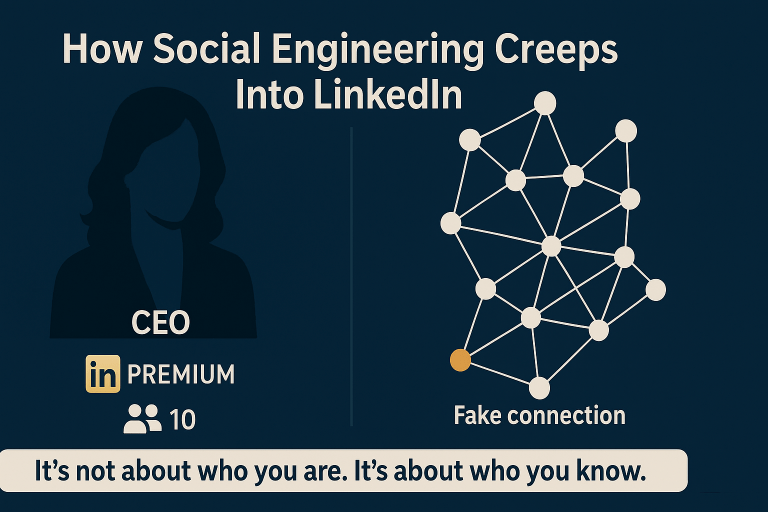You ever log into LinkedIn, expecting to check a few updates, maybe congratulate someone on a work anniversary—and then you see it. A connection request. From a strikingly beautiful woman. She’s a CEO of a multi-national corporation. And not just her—there’s a whole squad of them.
The message is always some version of:
“I came across your profile on LinkedIn and I’m very interested in your rich experience and professional background. May I ask you a few questions?”
Flattering, right? It makes you pause. I mean, who doesn’t want their experience described as “rich”? But then the pattern starts to emerge. Every one of these “CEOs” is a woman in her late 20s or early 30s. They’re all exceptionally attractive, they all seem to have two decades of business experience somehow, and they all attended top-tier international universities. Oh, and they’re all using LinkedIn Premium, flashing that golden badge like it’s an exclusive VIP pass.
They each have around 10 connections. You might even be one of the first they’ve chosen to reach out to. Special, huh?
Or maybe… not.
🎯 The New Face of Social Engineering
For a long time, we’ve been trained to spot fake profiles on Facebook, Instagram, and now X (formerly Twitter). We know what a spam bot looks like. But many people still treat LinkedIn like it’s a scam-free zone—a kind of digital utopia where professionalism protects us.
It doesn’t.
Scammers are getting smarter. They know that people are more trusting on LinkedIn. They know we’re proud of our resumes, hungry for opportunity, and more likely to engage with someone who flatters our work or asks for career advice. They also know that the “open networkers” out there will accept anything with a headshot and a job title.
But this isn’t just about boosting connection numbers. These fake profiles are often part of larger schemes—phishing attempts, malware delivery, or pretexts to gather sensitive info. It’s not about you, it’s about who you know. Every connection accepted is a step deeper into your professional network. And that’s where the real damage can happen.
👀 Red Flags to Watch For
Here are some quick tells that a LinkedIn connection request may not be what it seems:
- 🚩 Profile picture looks like a stock photo or is unusually glamorous
- 🚩 Few mutual connections or total connections under 50
- 🚩 Generic job title (“CEO”, “Entrepreneur”, “Advisor”) without specifics
- 🚩 Education and experience timeline doesn’t add up
- 🚩 The message is overly flattering or oddly formal
- 🚩 They’re always from big international firms you’ve never heard of
- 🚩 No activity or real engagement on their profile (no posts, no comments)
- 🚩 You’re one of their first 10 connections
- 🚩 Inconsistent grammar or phrasing that feels AI-generated
- 🚩 The profile was created recently (check profile activity or URL)
🔒 How to Stay Safe
- Be selective with who you connect with.
- Verify identity when in doubt.
- Don’t share personal or work information with strangers.
- Use LinkedIn’s messaging features to screen unfamiliar contacts.
- Periodically audit and clean up your network.
Want to know more?
📞 Call us today: 760-759-5900
🌐 Contact us: www.magisterba.com


